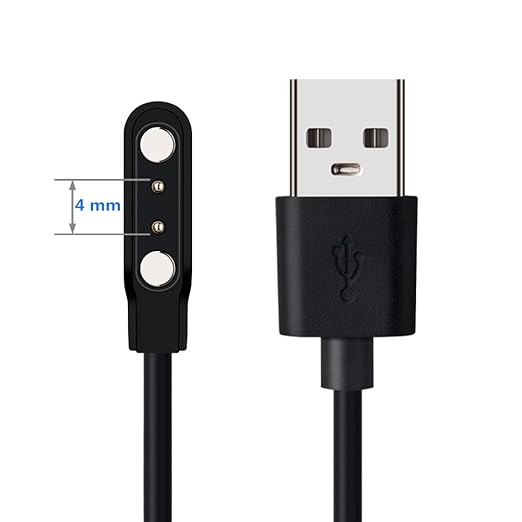In today’s technology-driven world, the need for wireless communication has never been more pronounced. From smartphones to smart home devices, the airwaves are increasingly crowded with signals that require regulation. One of the key regulatory bodies in the United States that oversees these devices is the Federal Communications Commission (FCC). As a consumer or manufacturer, understanding FCC IDs is crucial for ensuring compliance and making informed purchasing decisions. This article will decode FCC IDs, explain their importance, and guide you through the process of interpreting them.
What is an FCC ID?
An FCC ID is a unique identifier assigned by the Federal Communications Commission to devices that emit radio frequencies. This ID is critical for various reasons:
- Regulatory Compliance: It ensures that devices meet the FCC’s technical standards and do not cause harmful interference.
- Consumer Safety: It helps consumers identify devices that are safe and legitimate.
- Device Tracking: It aids in tracking devices for recalls or safety alerts.
Each FCC ID consists of two parts: the Grantee Code and the Product Code. The Grantee Code identifies the manufacturer or company that has been granted authorization for the device, while the Product Code identifies the specific equipment.
Structure of an FCC ID

The format of an FCC ID generally follows this structure:
- Grantee Code: Typically a three to five-character alphanumeric code assigned to the manufacturer.
- Product Code: This can be up to 14 characters long and is specific to the model or type of device.
For example, in the FCC ID “ABC123XYZ456”, “ABC” is the Grantee Code, while “123XYZ456” is the Product Code.
How to Decode an FCC ID

Decoding an FCC ID can be done in a few simple steps:
- Locate the FCC ID: The FCC ID is usually found on the device itself, in the user manual, or on the packaging.
- Understand the Components: Break down the FCC ID into its Grantee and Product Codes.
- Research the Manufacturer: Use the Grantee Code to look up the manufacturer on the FCC’s official database.
- Examine Device Details: Check the specific details related to the device, such as frequency range, output power, and compliance information.
By following these steps, you can gain valuable insights into the device’s compliance and specifications.
The Importance of FCC IDs for Consumers

For consumers, understanding FCC IDs can provide several benefits:
- Verification of Compliance: Consumers can confirm that the device meets safety and performance standards.
- Informed Purchases: Knowing the device’s FCC ID allows consumers to research its specifications and performance.
- Consumer Protection: Helps in identifying counterfeit products or devices that have not been properly authorized.
For instance, if you are considering purchasing a new wireless router, you can check the FCC ID to ensure it complies with the latest regulations and standards, thereby reducing the risk of interference with other devices.
Case Study: The Impact of Non-Compliance
In 2019, the FCC issued a recall for several models of wireless routers that were found to be operating outside of the permitted frequency bands. These devices, which lacked proper FCC IDs, caused significant interference with emergency communication systems. The recall served as a stark reminder of the importance of FCC compliance.
The Role of FCC IDs for Manufacturers

For manufacturers, FCC IDs are essential for several reasons:
- Market Access: Obtaining an FCC ID is a prerequisite for selling electronic devices in the United States.
- Brand Reputation: Compliance with FCC regulations enhances a manufacturer’s credibility and trustworthiness in the market.
- Legal Protection: Proper registration and compliance can protect manufacturers from potential legal issues and fines.
For example, a small startup developing a new Bluetooth speaker must obtain an FCC ID to enter the market legally. The process involves rigorous testing and documentation to ensure the product meets all necessary standards.
Steps for Manufacturers to Obtain an FCC ID

Manufacturers must follow a specific process to obtain an FCC ID:
- Device Testing: Conduct thorough testing of the device to ensure it meets FCC standards.
- Documentation: Prepare all required documentation, including test reports and user manuals.
- Submission: Submit the application along with the necessary fees to the FCC or an authorized Telecommunications Certification Body (TCB).
- Receive FCC ID: Once approved, the manufacturer will receive the FCC ID, which can then be affixed to the device.
Common Misconceptions About FCC IDs
Despite their importance, there are several misconceptions surrounding FCC IDs:
- All Devices Need an FCC ID: Not all devices require an FCC ID; exemptions exist for certain low-power devices.
- FCC ID Guarantees Quality: An FCC ID ensures compliance with frequency regulations but does not guarantee product quality.
- FCC IDs are Permanent: Manufacturers must update their FCC IDs if they make significant changes to a device.
Conclusion: Why Understanding FCC IDs Matters

In summary, FCC IDs play a critical role in the landscape of electronic devices, serving as a bridge between regulatory compliance and consumer safety. For consumers, they offer a means to verify the legitimacy and safety of a device, while for manufacturers, they are essential for market access and legal protection. By understanding how to decode and interpret FCC IDs, both consumers and manufacturers can navigate the complex world of wireless devices more effectively.
Whether you are a consumer looking to make an informed purchase or a manufacturer seeking to launch a new product, the knowledge of FCC IDs is invaluable. As technology continues to evolve, staying abreast of compliance standards will ensure that devices not only meet regulatory requirements but also contribute to a safer and more efficient communication environment.




